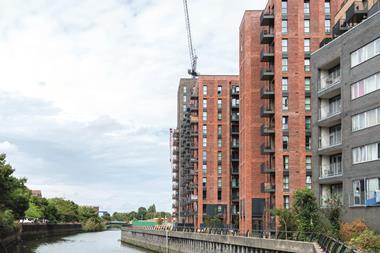Approximately 80% of current buildings will still be here in 2050, when the UK government expects to reach net zero emissions.

This highlights that, while easy to design and construct new buildings with sustainability ingrained into their structures, one of the biggest issues in addressing the climate emergency will be retrofitting existing commercial and housing stock to ensure it is properly insulated, uses renewable energy and meets climate goals.
Commercial landlords and asset managers particularly need to consider the cost of not addressing the urgent need for retrofitting in line with these goals, with the typically larger size of commercial premises naturally needing more heating and cooling, which accounts for the bulk of a building’s carbon footprint once operational.
Air-source heat pumps should be a primary tool for property owners to address carbon emissions. Although the new heat pumps subsidy is only for homeowners, commercial property owners and asset managers will need to consider the carbon savings and reputational advantage that come with enhanced sustainability, as well as EPC benefits.

While new-builds are often favoured, we may see more existing buildings being taken back to their concrete core or frames in order to repurpose as much of the structure as possible. While not always possible, there are significant energy and carbon emission savings in terms of less concrete use, reduced construction waste and also programme savings.
In the future, it may be that new buildings are designed to better allow for this from the outset so they can be reclad, or the frame and core reused more easily.
Environmentalists often talk about the cost of climate inaction, particularly on a national or global scale, but there is significant capital outlay associated with environmental improvements that cannot be overlooked.
If the long-term operational savings associated with those installation costs were more clearly expressed from the outset, then the financial costs of retrofitting to net zero may be more palatable.
Ben Stansfield is a partner at Gowling WLG






























No comments yet